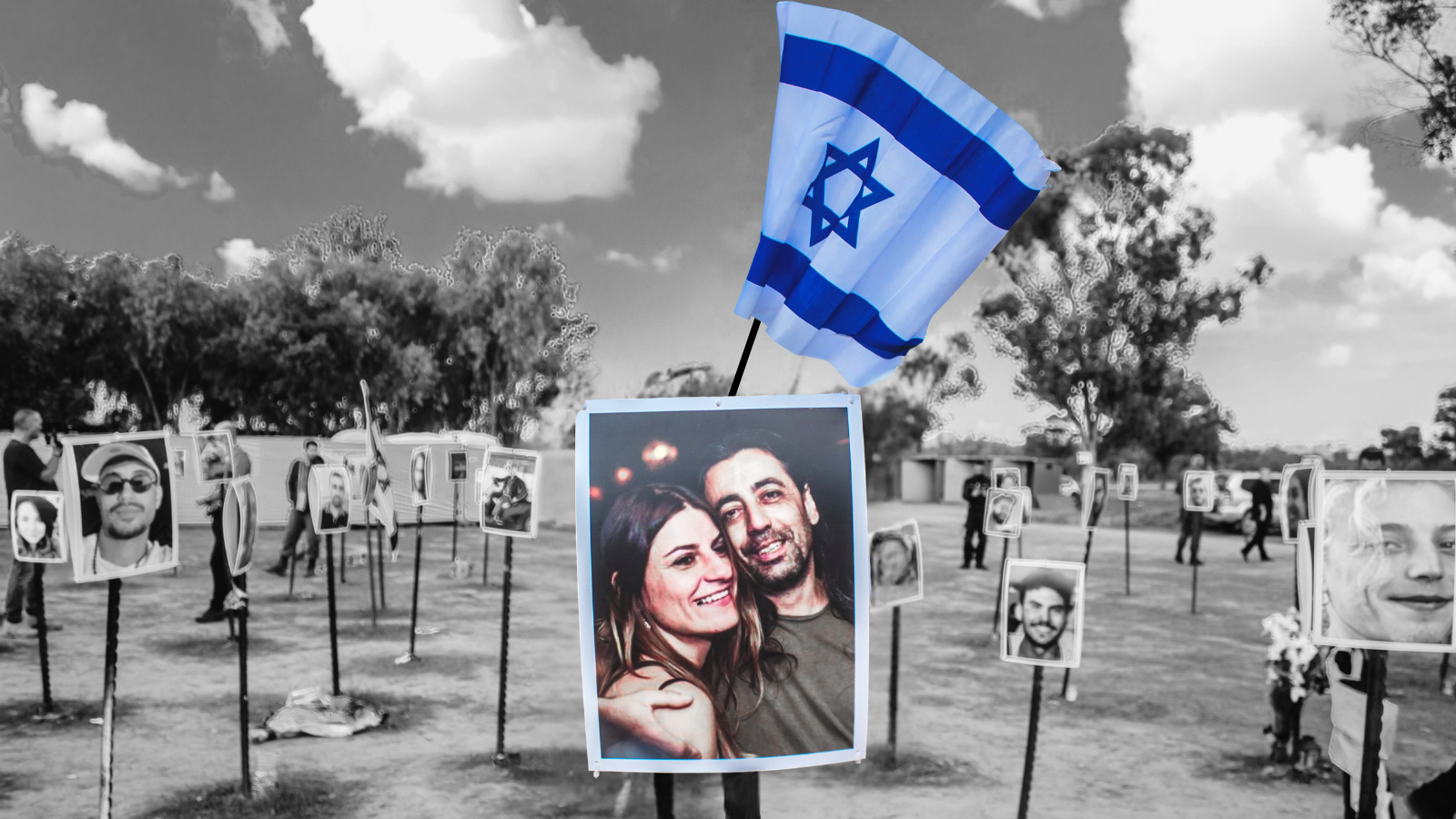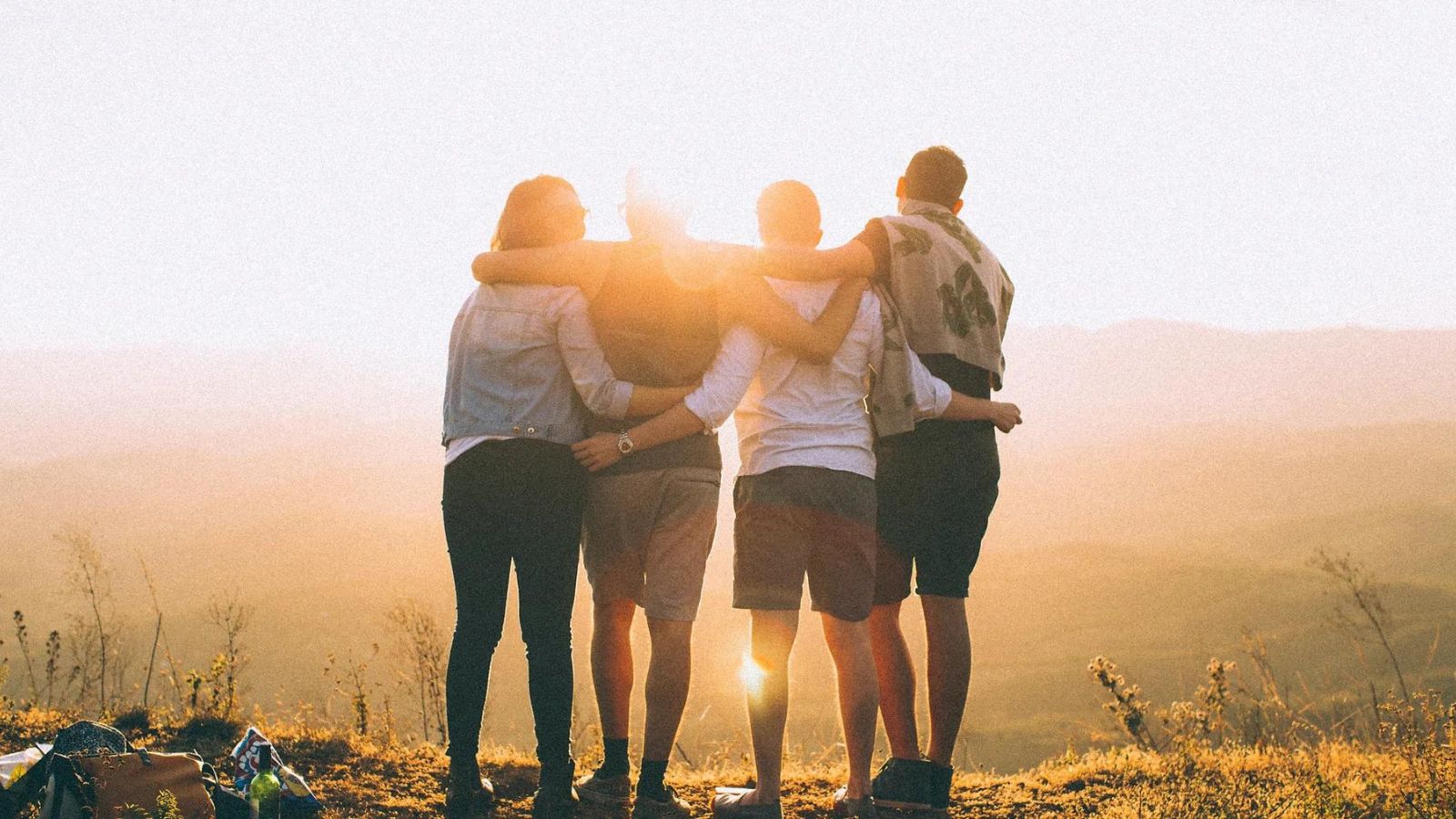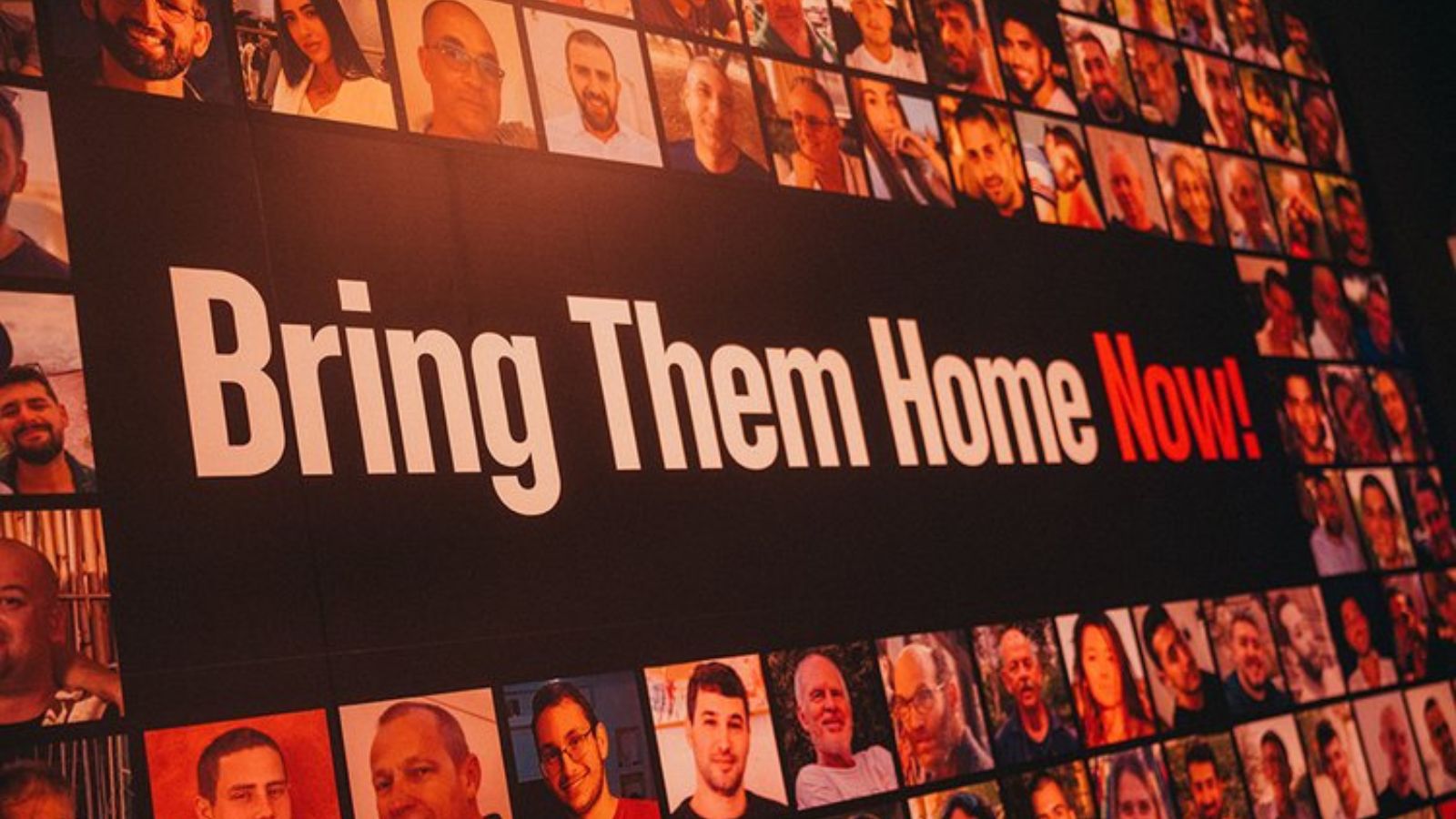Contributing Editor: Seth Lorinczi
If the October 7 assault on the Nova Festival was the world’s first recorded act of mass psychedelic violence, it inspired an equally unprecedented response in the therapeutic community. Leveraging the tools and frameworks of harm reduction, psychedelic therapy, and the simple recognition of grief, here’s how caregivers helped turn an unimaginable tragedy into a blueprint for the care of those in non-ordinary states.
At first, when the rockets began to hit, Eilat didn’t realize what was happening. After all, she’d come to dance, and something was making the music glitch. “The first thing we did was applaud the DJ when he stopped the music,” she said in a recent interview. “We thought it was an electricity problem; we didn’t understand what was happening. Then we heard the red alert.”
It was just after 6:29 am on October 7th, 2023, and Hamas terrorists had just launched a large-scale incursion into southern Israel. By day’s end, they’d murdered nearly 1,200 civilians and kidnapped some 240 more back to Gaza.
Of the many noteworthy and awful aspects of that day—including the publicized murder, torture, and rape of civilians—there’s one that’s received relatively little coverage. The massacre at the Supernova Sukkot Gathering (now more commonly known as the Nova Festival) was also the most significant known psychedelics-related act of violence and the largest massacre at a music festival in recorded history.
Ironically, enfolded in this fact is a silver lining–if a dark one. As shocking as the assault at Nova was—killing 364 civilians, with at least 40 hostages taken and many more assaulted and injured—in one sense, it couldn’t have happened at a better place. Israel, of all the world’s nations, is possibly the best equipped to respond to the particular needs of the victims.
While all acts of mass violence are by their nature deplorable, they remain a fact of life. And as psychedelics continue to permeate mainstream culture, those experiencing non-ordinary states will likely be subjected to similar traumatizing events. Here, then, are some factors that set up the Nova survivors and their caretakers for success.

A Psychedelic Assault
Billed as a celebration of “friends, love and infinite freedom,” the Nova Festival was an open-air psytrance music festival organized in collaboration between an Israeli and a Brazilian organization and timed to coincide with the final day of the Jewish holiday of Sukkot and Simchat Torah. As the sun rose on October 7th, many of the roughly 3,500 attendees were just beginning to experience the full psychoactive effects of the psychedelic substances they’d consumed—MDMA, LSD, and other drugs.
At that moment, Hamas operatives invaded the festival grounds and proceeded to shoot, chase, torture, rape, and kidnap festivalgoers.
According to survivor testimonies, the influence of psychedelics distorted their perceptions, delayed their responses, and rendered them even more emotionally sensitive than they might ordinarily be. And when hundreds of them began arriving at nearby emergency rooms—many wounded by military-grade weapons—it was clear that an extraordinary response was required.
Writing in Lucid News, Mary-Elizabeth Gifford described the reaction of Professor Roy Salomon, a cognitive neuroscientist at the University of Haifa, roughly 125 miles from the festival:
“When I saw a request for two helpers, I said, ‘Well, there were over 3,000 kids at this festival; we don’t just need two people to get over to an emergency room—we’re going to need hundreds of people to help.’ He reached out to the leaders of SafeZone and SafeShore, organizations that provide psychedelic harm-reduction services. It was immediately clear that clinicians and mental health practitioners were needed, and that it was essential ‘they understand psychedelics and trauma.’”
The Right Place?
The response to what might be termed the first chapter of psychedelic warfare hinged on several factors, many specific to Israel. Let’s examine them one by one.
The first is that in Israel, psychedelic-assisted therapy—employing ketamine, esketamine, and cannabis, as well as trials involving psilocybin and MDMA—is relatively uncontroversial. As a result, there’s a significant number of mental health professionals trained in psychedelic-assisted therapy.
Secondly, the Israeli rave scene—which dates back to the 1980s—is considered a mainstream aspect of society. Psytrance “tribes” can operate above ground, are broadly community-oriented, and have developed a robust harm-reduction infrastructure.
Thirdly, this more comprehensive recognition of the value of harm reduction has paved the way for addressing how substance use and mental health overlap—a conversation that extends from the dancefloor to academic circles to the Israeli parliament. Progressive attitudes in the mental health community and a track record of advocacy meant there was readily available expertise to draw on in the hours and days following the attack.
Finally, the saturation of technology and virtual communities already in place allowed countless volunteers to mobilize in rapid response.

A History of Harm Reduction
Harm reduction—a term broadly referring to a range of practices to lessen the negative consequences of drug use—has deep roots within the psytrance community. On October 7th, the designated team at Nova was Anashim Tovim—or “Good People.” Tragically, three of the organization’s nine-person squad were killed during the attack, the first known deaths of harm reductionists in the line of duty. The group’s safe space and two vans were destroyed as well.
Within hours of the attack, a group of eight therapists had established SafeHeart in support of the survivors. After posting a Facebook request for psychedelic-informed therapists on October 7th and launching a website the following day, SafeHeart quickly mobilized a nationwide network of clinical providers.
In the project’s first week, therapists, “safe space” leaders, and harm reduction specialists addressed over 1,200 inquiries, bringing together expertise in psychedelic harm reduction, trauma work, and clinical practice. Soon SafeHeart had established a network of over 260 volunteers with advanced degrees and clinical licenses, including a team of psychiatrists who provided consultations and pharmacological treatments as needed.
Recognizing the scale of the emergency, SafeHeart also coordinated with the Israeli Ministry of Health to ensure expanded mental health coverage for survivors. As SafeHeart’s head of psychedelic education, Nir Tadmor, M.Sc., described in an early 2024 interview: “I had to translate the need for a mass psychedelic-informed trauma response by trained practitioners to the government-run healthcare system.”
The Role of MAPS
Many Nova first responders credit the Multidisciplinary Association for Psychedelic Studies (MAPS), the drug development company currently operating clinical trials in Israel, with bringing psychedelic care into Israeli culture and training a critical mass of therapists.
Others, including SafeHeart’s Tadmor, feel this is a distortion: that MAPS has been successful in Israel because of the country’s pre-existing psychedelic culture. Regardless, the majority of therapists mobilized by SafeHeart and other initiatives were familiar with psychedelic and rave culture, significantly increasing their effectiveness. By May 2024, the initiative had provided some 5,200 hours of psychotherapy and psychiatric consultation for more than 2,500 survivors.
This care is ongoing. Since the attack, seven group therapy retreats have offered care to more than 250 survivors, while roughly 750 were placed in long-term psychotherapy. In addition, 820 survivors were recruited to join an in-depth research project at the University of Haifa under the supervision of Professor Roy Salomon and Professor Roee Admon.
In collaboration with SafeHeart, Dr. Salomon and Dr. Admon began a large-scale study to untangle the impact of acute trauma under the influence of psychedelics. Using behavioral, cognitive, physiological, and neural (fMRI) measurements, the goal is to better understand clinical trajectories and mechanisms of trauma experienced while under psychedelics.
The results have not yet been published; according to Professor Admon:
“Many people who are currently symptom-free may yet experience trauma-related problems. The PTSD diagnosis stabilizes within the first year post-trauma.”

A Safe Space to Grieve
In addition to what might be termed “tangible care”—tending to physical and psychological wounds—there’s the harder-to-define but equally crucial job of providing an arena for the simple expression of grief.
In Rishpon, Dr. Lia Naor established Merhav Marpe, an emergency mental health complex, to provide immediate care for those traumatized by the attacks. Dr. Naor stresses that the efforts weren’t meant as an entire course of treatment, but rather to offer an “immediate and integrative response to trauma,” ranging from psychotherapy to yoga and beyond.
And IsraAID, a humanitarian NGO more accustomed to working abroad, funded twenty retreats for Nova survivors at a kosher farm-to-table retreat facility in Cyprus—owner Yoni Kahana offered the location free of charge. Eventually, some 2000 individuals participated, ending each day with a party in which they were the DJs. IsraAid staffed the retreats with therapists who had experience with trauma and emphasized the creation of survivor-led support networks.


Art from Tragedy
Back in Israel, artists, DJs, musicians, and other creatives acted swiftly to create or adapt initiatives to honor the events of October 7th and support survivors. Coincidentally, the same week as the attack, an exhibit entitled Mycelium—exploring the relationship between art and its audience using fungal mycelia—had just opened at Tel Aviv’s Schecter Gallery.
The exhibit’s creator, Sharon Glazberg, conducted sessions focused on therapy, healing, art, and ritual alongside a carefully assembled group of therapists, artists, and philosophers. During the first weeks of the war, the gallery provided free access to a team of therapists ready to treat primary and secondary trauma.
In the wake of October 7th, Nova’s founders—Omri Sassi, Yoni Feingold, Ofir Amir, and Yagil Rimoni—organized a memorial exhibit curated by Reut Feingold. Named for the exact minute the attack began, Nova 6.29 opened at the Expo Tel Aviv-International Convention Center on December 7, 2023. Showcasing items salvaged from the festival, the display includes video footage of people dancing in their last moments, WhatsApp exchanges capturing the fear and terror of the attendees, portraits of those who never made it home, and items such as shoes and burnt-out cars.
Since then, the large-scale installation has traveled to New York and Los Angeles “to create a powerful, educational, and emotional exhibit that allows others to witness the horrors of what occurred on that day at The Nova Music Festival.”
What’s Next
Eilat—the festivalgoer initially confused by the sound of rockets—survived October 7th by the barest of chances. Fleeing north towards Be’eri, she and her friends stopped at a bomb shelter, but finding it already crowded with festivalgoers they pressed on. When Hamas terrorists reached the shelter, they killed 15 of those hiding inside. Today, Eilat expresses gratitude and an essential resilience regarding her experience:
“I did three things. I did hagomel—a blessing about surviving near-death experiences. The second was that I dyed my hair purple—I had a lot of excuses why not to do that [before]. The third was to gather all my friends and say thanks for the miracle. Then, I felt like I could go back to dancing again.
It was tough at the beginning. We don’t dance the same as before October 7th; it’s something important to say. We dance, and we also cry, and we laugh, and we cry. I live my life every day the best that I can. So we are dancing again.”
If the assault on the Nova Festival cast a profound and terrifying shadow, the initiatives that have sprung up in response are a testament to the power of community and the importance of acknowledging our shared grief. In the years to come, they may inform how the larger culture discusses the risks of psychedelic use, the role of harm reduction, and the role of these life-changing medicines themselves.















